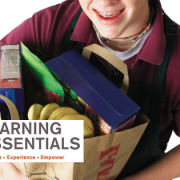Motivation During Distance Learning
Staying motivated during distance learning is no small feat. At this point, students all over the country are tasked with adapting to a new normal when it comes to their education. Gone are the days when students have the constant support and guidance of their teachers—for now, at least. The face-to-face instruction has dwindled, as has feedback in real time and the opportunities to collaborate with peers in the classroom setting to which students have grown accustomed. To throw an even bigger wrench into the mix, many schools are utilizing a pass/fail grading policy for the remainder of the school year. Some students, primarily those in elementary school, are not receiving any grades for the work that they complete during the fourth quarter.
For many students, grades are the reason that they show up to learn; grades reflect their abilities, knowledge, skills, and academic development. Without the specific evaluative piece, what is the motivation for putting forth their best effort? How can students be motivated when there is no distinction between an A and a C? If there is no difference between earning 100% and 70%, who is going to strive for excellence?
But fear not, we’ve got some ideas to establish motivation during these most unmotivating times!
- One way to motivate students without using percentages, grade point averages, and grading scales is to change the goal of classroom teaching and learning. Instead of placing emphasis on scores and mastery of a skill, teachers can shift the narrative to encourage students to focus on exploration, curiosity, creativity, and ingenuity. If we educators design virtual learning activities that promote open-ended conversations, creative problem-solving, and tasks that translate academic skills into real-world applications, students begin to see the value in what they’re learning, not just the score that they receive at the end of the unit. Essentially, we have to provide student choice so that kids engage in the learning for the sake of learning, as opposed to the eventual grade. When the grade is removed as the “end goal,” students begin to see themselves as continuous learners. They begin to recognize what truly interests them and how they best approach problems and utilize certain skills. Gradeless learning means that students can focus more on how they learn.
- With pass/fail grading, teachers and parents should solidify the message to students that, instead of focusing on grades and accumulating points, this time will be spent providing specific feedback and assisting students with clarifications and revisions, whether that be in algebra, history, English, etc. Since teachers now have a simpler means of grading, they can spend more time helping students to analyze and improve upon their errors or missteps. Feedback-focused scoring provides the best guidance for students to improve and removes the stress of the grade by placing the emphasis on improvement and growth, thus increasing the motivation to do better next time.
- Show students how, by removing specific grades, they become more active learners. Their role becomes much more present and less passive because they are no longer just the recipient of the grade. By adopting this mindset, students become intrinsically motivated, as opposed to being motivated by the extrinsic focus placed on the grade.
- Motivate students by comparing the brain to a muscle. Muscles are only strengthened by exercising them. Similarly, the brain needs to be challenged regularly to ensure that neural pathways are created and strengthened. Think of learning as a workout so that students see how skipping the “gym” only sets them back further in their learning.
- Parents can help to challenge kids by asking them to assign their own quantitative score once their teacher has determined if they’ve passed or failed a certain task. Using a teacher-derived rubric, students can take the role of assessing their own work based on the specific criteria laid out. Grading their own work provides them the opportunity to take an objective look at what they have submitted—again, this is about growth and improvement for next time.








